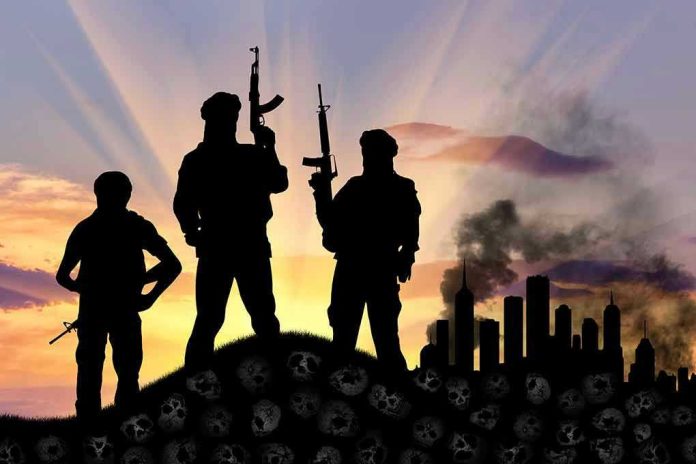
Hamas is now turning its guns on its own people, executing Palestinians who dare to call for an end to the terror group’s stranglehold on Gaza as mounting civilian casualties and humanitarian devastation fuel unprecedented grassroots dissent against the organization’s leadership.
Story Highlights
- Growing Palestinian opposition demands Hamas step down amid war devastation
- Terror group allegedly executing critics and dissidents to maintain power
- Unprecedented scale of internal dissent reflects generational shift in Gaza
- Humanitarian crisis deepens as Hamas prioritizes control over civilian welfare
Terror Group Turns Violent Against Own Population
Reports emerging from Gaza reveal Hamas has responded to increasing internal criticism with brutal repression, including alleged executions of Palestinians calling for political change. The terror organization, facing unprecedented challenges to its authority since seizing control in 2007, appears willing to sacrifice its own people to maintain power. This internal violence demonstrates Hamas’s true priorities—preserving its grip on Gaza rather than protecting Palestinian civilians from ongoing humanitarian catastrophe.
Grassroots Opposition Grows Despite Repression
Palestinian civil society groups and ordinary citizens have increasingly voiced demands for Hamas to relinquish power and negotiate an end to the conflict that began with the October 7, 2023 terrorist attack on Israel. These calls represent a significant shift from previous conflicts when external threats typically unified Gaza residents behind Hamas leadership. The current dissent reflects deep frustration with the organization’s governance and war strategy as civilian casualties mount into tens of thousands.
Humanitarian Crisis Fuels Political Awakening
Gaza’s infrastructure has collapsed under the weight of prolonged conflict, leaving residents without adequate food, water, medical supplies, or basic services. The young, impoverished population—traumatized by repeated wars—now faces the dual threat of Israeli military operations and Hamas’s internal repression. International agencies warn of famine and disease as the humanitarian situation deteriorates, yet Hamas continues prioritizing military objectives over civilian welfare, further alienating the population it claims to represent.
This political awakening among Palestinians exposes the fundamental failure of Hamas’s radical ideology to deliver prosperity, security, or hope for Gaza’s future. The terror group’s violent suppression of dissent reveals its desperation to maintain control as its legitimacy crumbles among the very people it purports to defend.
Regional Implications and Conservative Concerns
The internal Palestinian revolt against Hamas presents both opportunities and challenges for American interests in the Middle East. While weakening terrorist organizations serves U.S. security objectives, political vacuums in volatile regions can create new threats. Conservative Americans should recognize that Hamas’s brutal tactics against its own population vindicate longstanding U.S. policies designating the group as a terrorist organization and rejecting international pressure to legitimize radical Islamic movements through diplomatic engagement.
Anyone who marches for Hamas owns these murders. https://t.co/xSPTQphHGH
— Outonalimb (@2BOutonalimb) August 18, 2025
The situation underscores why President Trump’s strong support for Israel and rejection of terrorist appeasement represents sound national security policy. As Hamas’s grip weakens, America must ensure any emerging Palestinian leadership genuinely commits to peaceful coexistence rather than continued terrorism disguised as resistance.
Sources:
Britannica: Israel-Hamas War – Ceasefire and hostage exchange January-March 2025
The National: Israel’s war on Gaza – a timeline of major events
ABC News: Timeline – Israel’s actions in Gaza after end of ceasefire with Hamas







